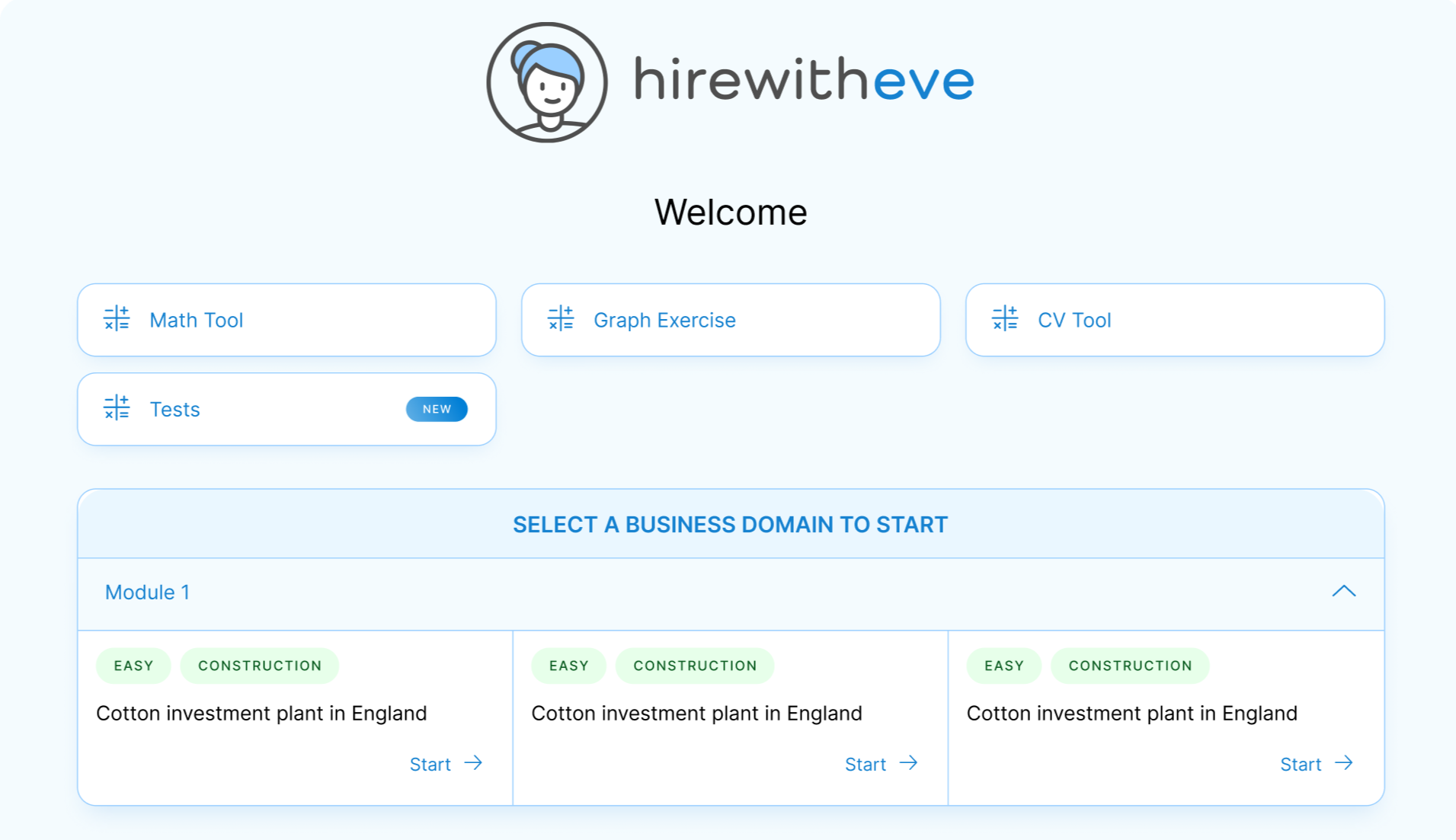5 Ways to Streamline HR Processes to Save Time & Money

In today's talent acquisition landscape, finding the best candidate isn't just about reviewing resumes or holding interviews—it's about understanding candidates on a deeper level. Personality tests are gaining traction as an effective tool to assess candidates’ behaviors, decision-making abilities, and communication styles. This is especially important for HR managers and talent acquisition specialists seeking the right fit for their organizational culture.
One of the most widely recognized personality tests used in hiring is the 16 Personalities test. It reveals valuable insights about candidates’ work preferences, motivations, and how they collaborate with others. However, not all 16 Personalities tests are created equal. The challenge lies in selecting the most accurate platform to administer these tests.
This blog explores the importance of personality tests in workplace settings, and discusses how you can integrate these assessments into your hiring process.
Table of contents
Introduction
In today’s fast-paced corporate world, human resources (HR) professionals and talent acquisition specialists are constantly seeking ways to optimize their operations. To remain competitive, organizations need to efficiently manage their workforce while minimizing costs. This is where the concept of "Streamline HR Processes" becomes crucial. Streamlining HR processes can lead to more efficient use of time, better resource management, and cost savings—ultimately benefiting the entire organization.
From hiring to onboarding and employee management, the importance of streamlined HR processes cannot be overstated. By adopting best practices and leveraging modern technologies, HR teams can focus more on strategic tasks, such as employee engagement and retention, rather than getting bogged down by routine administrative work. This blog will walk you through five effective ways to "Streamline HR Processes" that not only save time but also help cut down operational costs.
The Strategic Role of the CHRO
Before we dive into specific strategies, it’s important to understand why streamlining HR processes is essential for organizations. According to a recent survey conducted by Deloitte, over 40% of HR professionals claim that their teams spend most of their time on repetitive administrative tasks, leaving little room for strategic decision-making. This imbalance highlights the need to focus on how to "Streamline HR Processes" and make them more efficient.
By choosing to streamline HR processes, organizations can achieve:
Faster and more efficient hiring
Reduced administrative burden
Enhanced employee experience
Lower costs associated with HR operations
Better compliance and reduced errors
Implementing strategies to streamline HR processes allows HR teams to work smarter, not harder, ensuring they have more time to focus on initiatives that add real value to the business.
5 Effective Ways to Streamline HR Processes
1. Automate Repetitive Tasks
Automation is the backbone of efforts to streamline HR processes. HR managers often spend countless hours on repetitive tasks such as scheduling interviews, sending follow-up emails, and processing payroll. By implementing automation tools, these time-consuming processes can be handled more efficiently. Automating mundane tasks can free up valuable time, allowing HR teams to focus on strategic activities.
Key Takeaways:
Use automation software for scheduling, email templates, and reminders.
Automate payroll processing and benefits management.
Automate data entry for onboarding new employees.
Automation not only reduces errors but also ensures that HR processes are executed consistently. This is crucial for maintaining a smooth workflow, especially in large organizations with complex HR needs.
2. Centralize Employee Data
Having all employee data stored in one centralized platform is a critical step to streamline HR processes. Centralized systems reduce the time spent searching for employee information and help HR teams respond more quickly to inquiries. Whether it’s tracking leave balances, managing benefits, or accessing performance reviews, centralizing data enables easy access to critical HR information.
Key Takeaways:
Use cloud-based HR software to store employee records.
Implement self-service portals for employees to access their own information.
Ensure compliance and data security with proper access controls.
Centralized data management not only saves time but also minimizes the risk of errors and inconsistencies, which can be costly for organizations in terms of compliance and employee satisfaction.
3. Use Applicant Tracking Systems (ATS)
Recruitment can be one of the most time-consuming aspects of HR. Using an Applicant Tracking System (ATS) can significantly streamline HR processes by managing the entire hiring workflow, from job postings to interview scheduling and candidate tracking.
An ATS allows HR teams to:
Post jobs to multiple platforms from a single interface.
Screen resumes automatically based on predefined criteria.
Track candidate status and manage communication efficiently.
This not only speeds up the hiring process but also reduces the likelihood of qualified candidates slipping through the cracks. Implementing an ATS is an effective way to streamline HR processes and optimize recruitment efforts.
4. Leverage Data Analytics
Data analytics is revolutionizing the HR landscape. By analyzing workforce data, HR teams can gain valuable insights into employee behavior, performance, and overall workforce trends. Utilizing analytics allows HR managers to make informed decisions and proactively address potential issues before they escalate.
Key Takeaways:
Use analytics to identify patterns in employee turnover and retention.
Track recruitment metrics to optimize the hiring process.
Monitor performance trends to support employee development.
When used effectively, data analytics can provide a solid foundation for improving HR processes. With a clear understanding of workforce trends, HR teams can streamline operations and strategically plan for future workforce needs.
5. Implement Skills-Based Hiring
The traditional method of hiring based on job titles and credentials is becoming outdated. To truly streamline HR processes, it’s important to focus on skills-based hiring. This approach allows HR teams to target candidates who possess the skills and competencies needed for a role, regardless of their previous job titles.
Key Takeaways:
Use skills assessments during the hiring process to evaluate candidates.
Implement structured interviews focused on skills and problem-solving.
Align job descriptions to highlight skills over job titles.
Skills-based hiring ensures that companies bring on board the right talent, reducing the likelihood of mismatches and turnover. This approach is especially valuable for technical roles where specific skills are more important than traditional qualifications.
Survey Data and Industry Insights
According to a recent survey by the Society for Human Resource Management (SHRM), 60% of HR managers agree that adopting technology to streamline HR processes has significantly improved their productivity. Furthermore, companies that invest in HR technology report a 35% reduction in the time spent on routine HR tasks and a 25% reduction in associated costs.
These numbers highlight the importance of implementing strategies to streamline HR processes, particularly in organizations with large workforces or complex HR needs. By leveraging technology and best practices, HR teams can ensure that they are using their time and resources effectively.
Conclusion: The Role of Technology in Streamlining HR Processes
In conclusion, organizations that prioritize efforts to streamline HR processes stand to benefit greatly in terms of time savings, cost reduction, and improved employee experiences. Automation, centralization, data analytics, and skills-based hiring are all essential components of an effective strategy to streamline HR processes.
For HR professionals and talent acquisition specialists looking to optimize their workflows, platforms like HirewithEve can be invaluable. HirewithEve offers a comprehensive suite of features that include skills-based hiring, automation of repetitive tasks, and centralized data management—making it easier to streamline HR processes and focus on strategic objectives.
By adopting tools like these, HR teams can transform the way they work, ensuring they are well-positioned to meet the demands of a rapidly evolving business landscape.
Implementing these five strategies can significantly streamline HR processes, leading to a more efficient and cost-effective HR function. So, take the first step today and explore how technology can help your organization "Streamline HR Processes" for better outcomes.
Target Your Talent
Unlock tailored solutions for your recruitment and hiring needs with Eve Platform's extensive case study library.
Subscribe now to enhance your HR expertise and excel in your role.
Free Resources

Transforming Hiring: 7 Key Recruiting Metrics
Enhancing recruitment processes with data-driven insights for better hiring outcomes.

Reducing Hiring Bias with Hirewitheve.
Utilizing Hirewitheve to combat bias and streamline recruitment processes effectively.

Hiring Detail-Oriented Candidates
HirewithEve enhances hiring by accurately assessing candidate's attention to detail-oriented.








